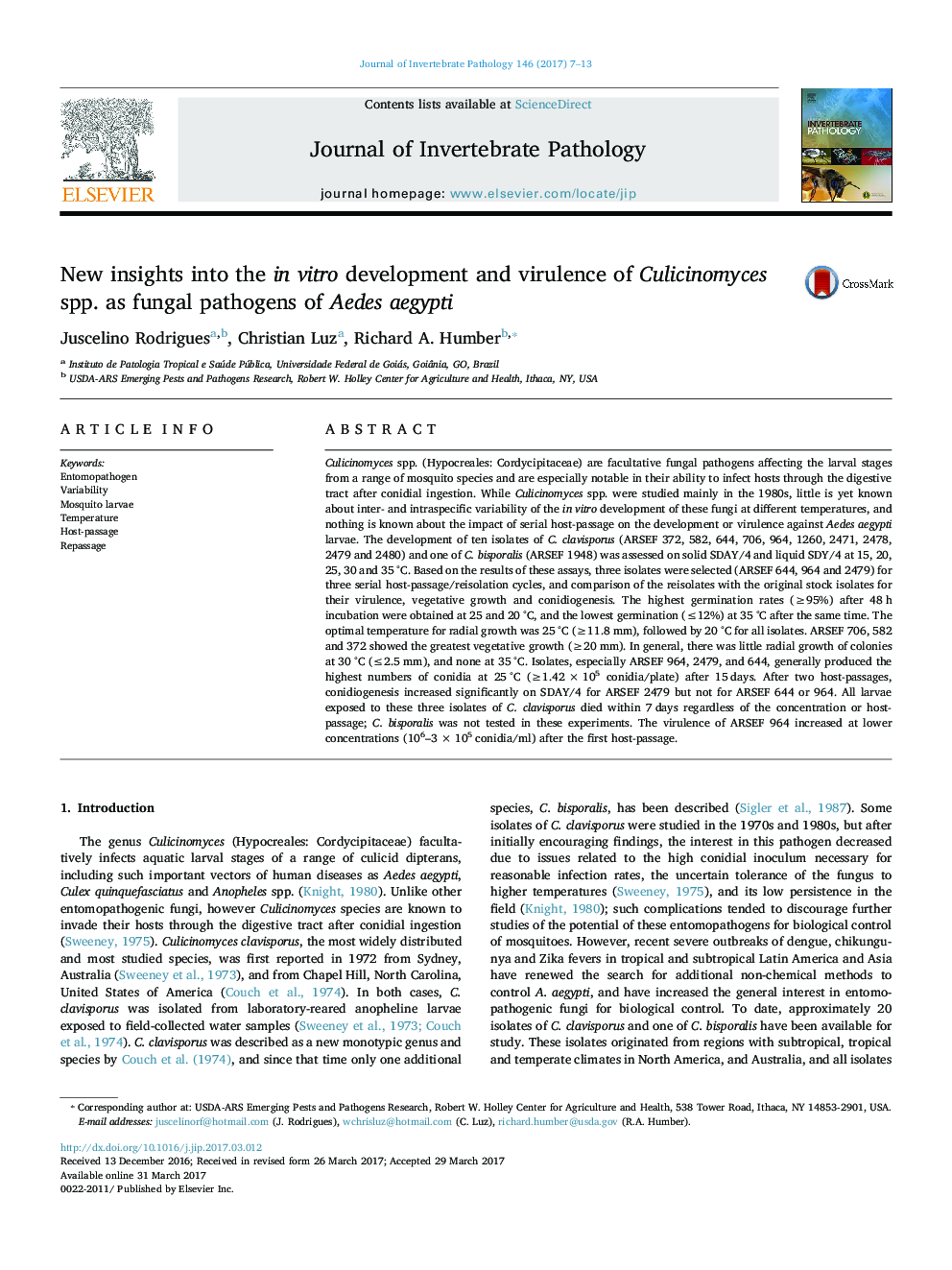| کد مقاله | کد نشریه | سال انتشار | مقاله انگلیسی | نسخه تمام متن |
|---|---|---|---|---|
| 5766982 | 1628206 | 2017 | 7 صفحه PDF | دانلود رایگان |

- Key properties of Culicinomyces species show in vitro and in vivo variability.
- Highest germination, growth and conidiogenensis at 25 and 20 °C.
- In vitro development at 35 °C is hampered or inhibited altogether.
- Serial host-passage can stimulate greater conidiogenesis and increased virulence.
Culicinomyces spp. (Hypocreales: Cordycipitaceae) are facultative fungal pathogens affecting the larval stages from a range of mosquito species and are especially notable in their ability to infect hosts through the digestive tract after conidial ingestion. While Culicinomyces spp. were studied mainly in the 1980s, little is yet known about inter- and intraspecific variability of the in vitro development of these fungi at different temperatures, and nothing is known about the impact of serial host-passage on the development or virulence against Aedes aegypti larvae. The development of ten isolates of C. clavisporus (ARSEF 372, 582, 644, 706, 964, 1260, 2471, 2478, 2479 and 2480) and one of C. bisporalis (ARSEF 1948) was assessed on solid SDAY/4 and liquid SDY/4 at 15, 20, 25, 30 and 35 °C. Based on the results of these assays, three isolates were selected (ARSEF 644, 964 and 2479) for three serial host-passage/reisolation cycles, and comparison of the reisolates with the original stock isolates for their virulence, vegetative growth and conidiogenesis. The highest germination rates (â¥95%) after 48 h incubation were obtained at 25 and 20 °C, and the lowest germination (â¤12%) at 35 °C after the same time. The optimal temperature for radial growth was 25 °C (â¥11.8 mm), followed by 20 °C for all isolates. ARSEF 706, 582 and 372 showed the greatest vegetative growth (â¥20 mm). In general, there was little radial growth of colonies at 30 °C (â¤2.5 mm), and none at 35 °C. Isolates, especially ARSEF 964, 2479, and 644, generally produced the highest numbers of conidia at 25 °C (â¥1.42 Ã 105 conidia/plate) after 15 days. After two host-passages, conidiogenesis increased significantly on SDAY/4 for ARSEF 2479 but not for ARSEF 644 or 964. All larvae exposed to these three isolates of C. clavisporus died within 7 days regardless of the concentration or host-passage; C. bisporalis was not tested in these experiments. The virulence of ARSEF 964 increased at lower concentrations (106-3 Ã 105 conidia/ml) after the first host-passage.
185
Journal: Journal of Invertebrate Pathology - Volume 146, June 2017, Pages 7-13